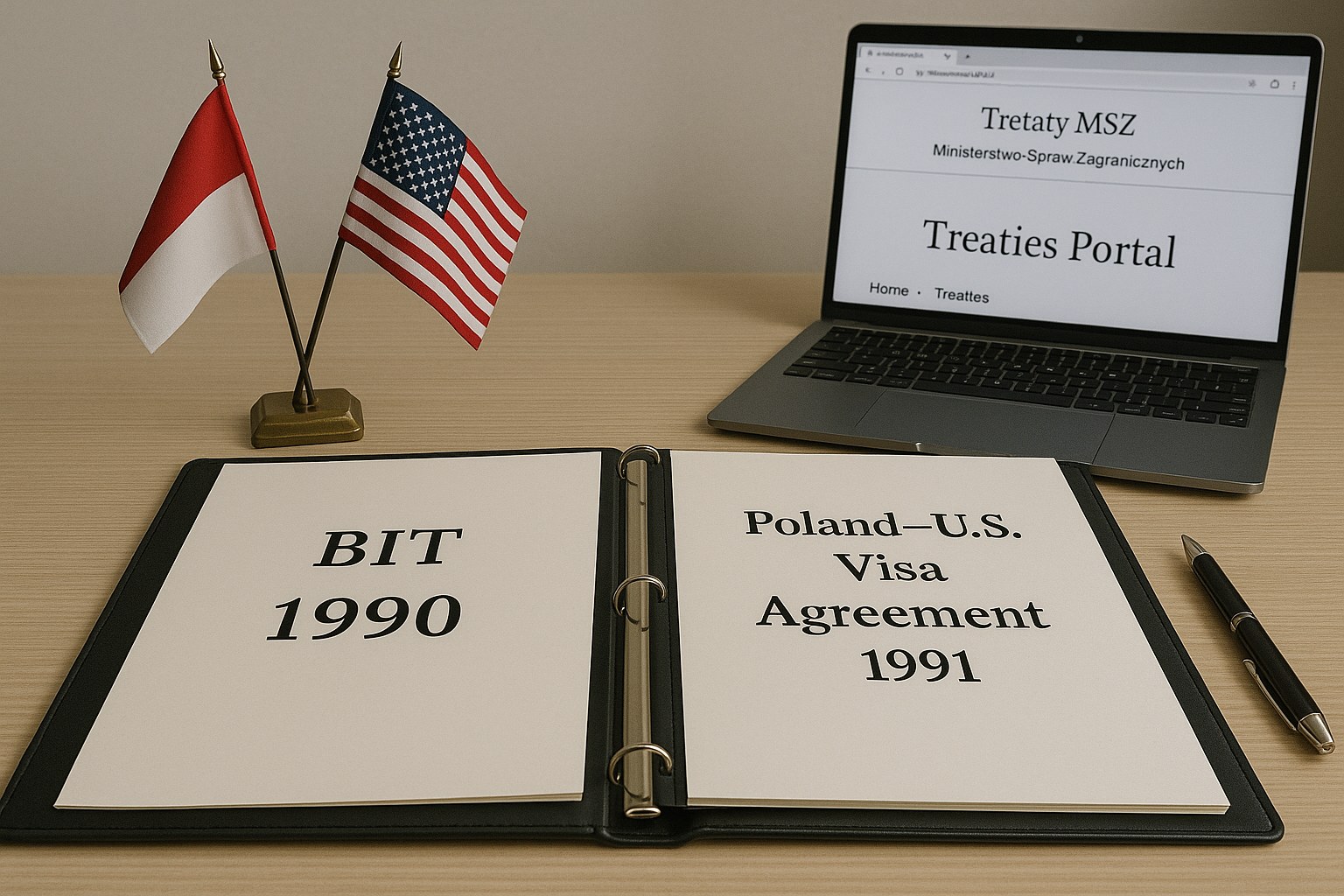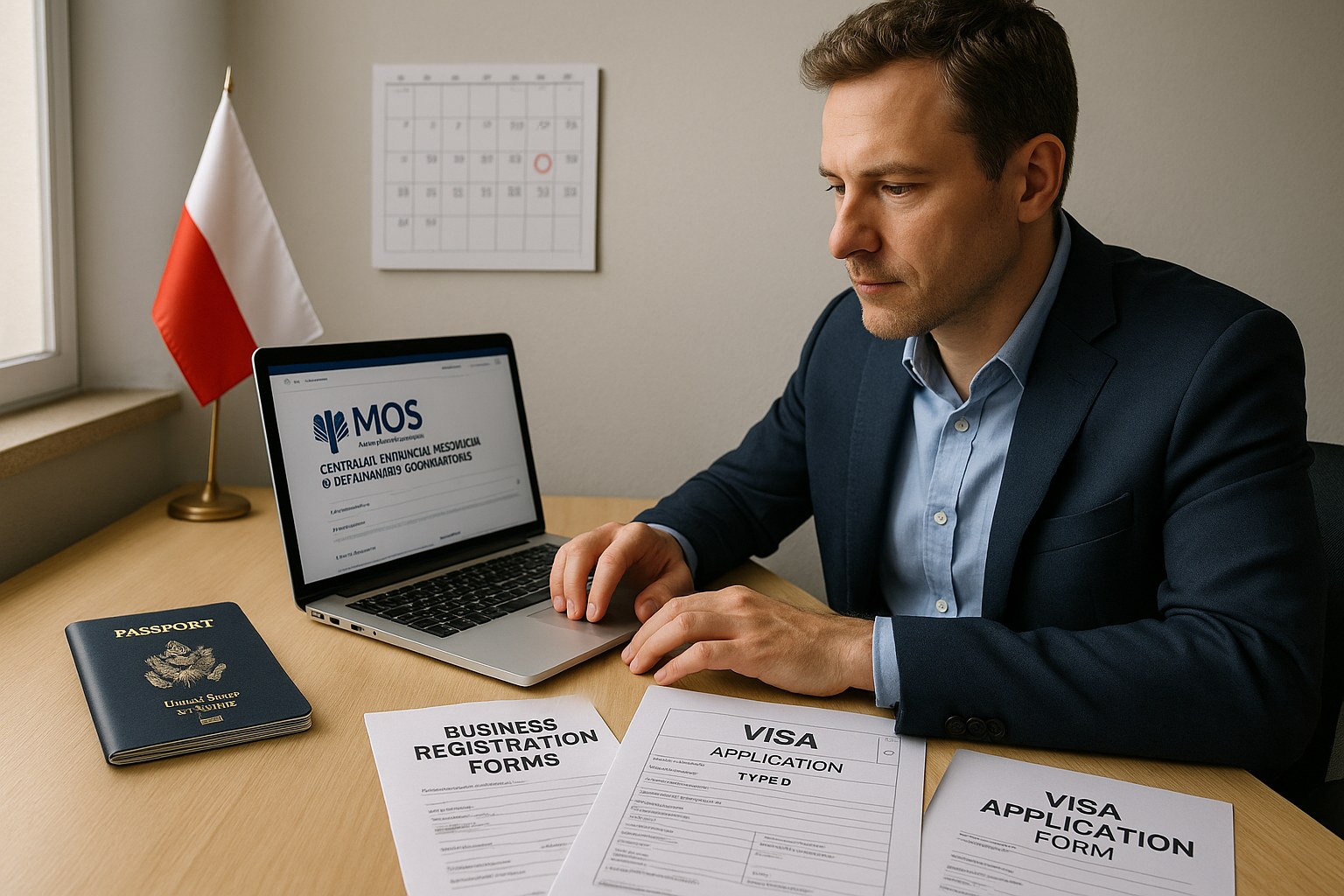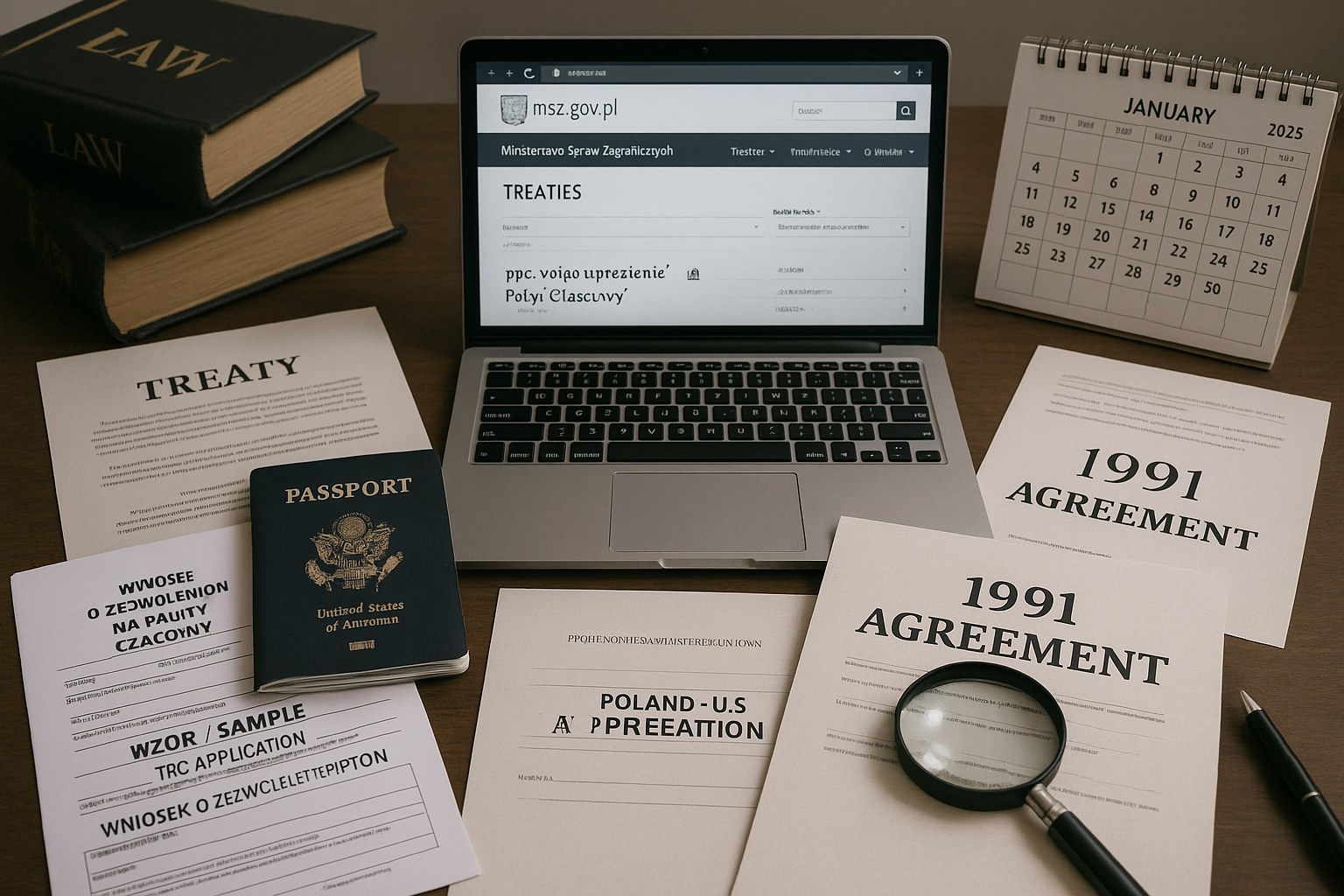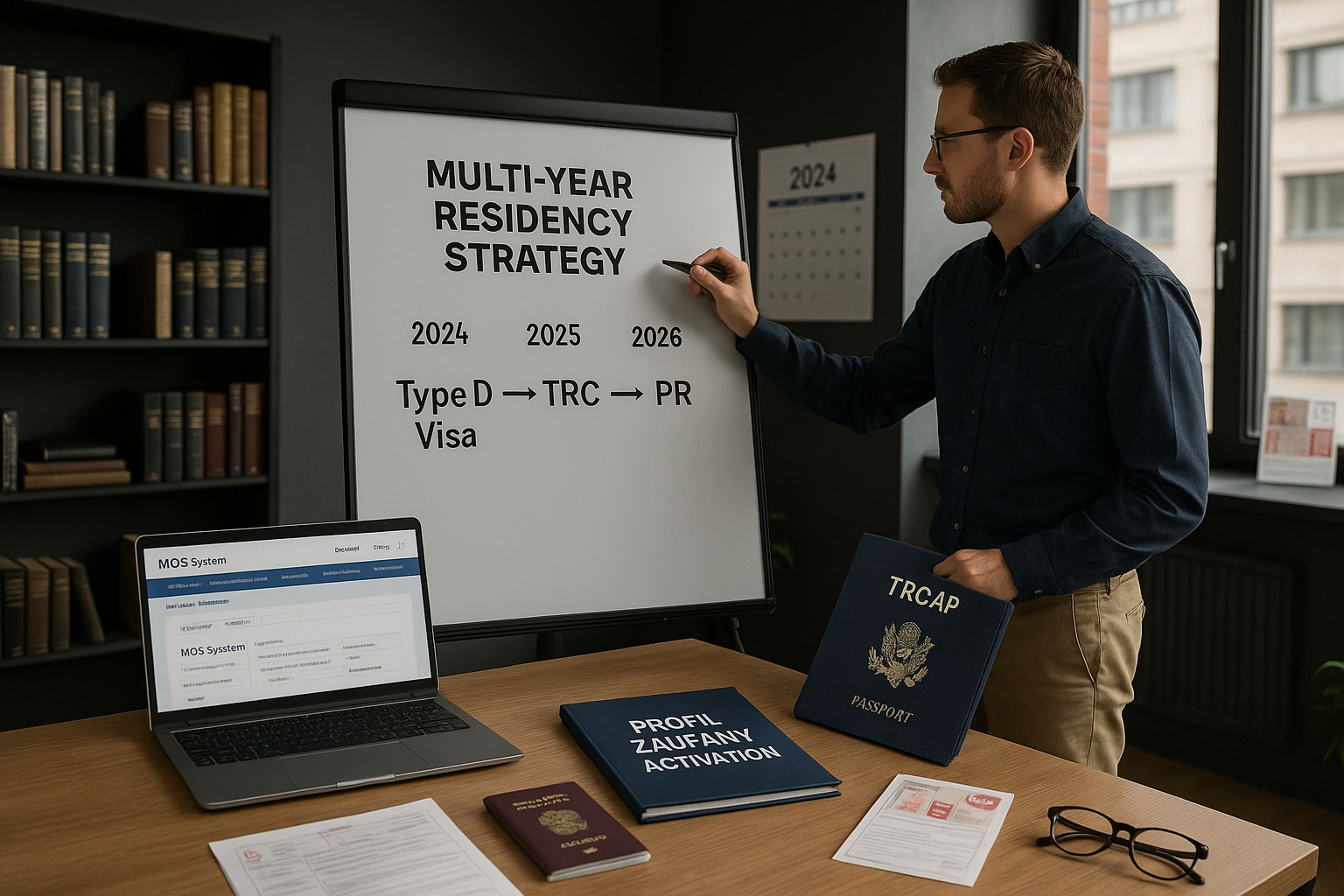Youth leadership mission trips Poland equip teens with discipleship, bilingual ministry, and leadership skills while serving alongside Polish youth.


Poland’s 2025 immigration reforms mark a turning point — especially for Americans who have historically enjoyed exceptional privileges under a little-known bilateral agreement from 1991. For decades, U.S. passport holders were permitted to stay in Poland for 90 days visa-free and could simply exit and re-enter to reset the clock. This wasn’t an informal loophole — it was an official exchange of diplomatic notes between Poland and the United States, formally recognized by Poland’s Ministry of Foreign Affairs (Document ID: 8047).
This agreement meant that unlike most Schengen countries, Poland continued to honor U.S. re-entry on the same terms even after joining the EU and the Schengen Zone in 2007. As a result, thousands of Americans were able to remain in Poland long-term by simply making short border runs — without ever needing a visa or residence permit.
But this era may now be coming to a close.
Once the EU Entry/Exit System (EES) starts on 12 October 2025 (full by April 2026), the Poland-only short-stay re-entry for U.S. citizens is ending. EES applies a single Schengen 90/180 counter across all Member States, so the old 90-day reset will no longer work in practice.
Per the European Commission’s EES impact assessment: “The proper functioning of the EES for all visa-free travelers will require the adjustment of the existing bilateral visa waiver agreements.” CELEX:52016SC0115
EES is a centralized system that logs every non-EU visitor’s time in the Schengen Area. Once live, it will enforce the standard 90/180-day rule and remove Poland’s ability to operate a separate short-stay clock for U.S. citizens. For now, the EU has recognized that this topic must still be addressed via adjustments to existing bilaterals.
Note: The 1991 bilateral notes are not formally repealed, but EES removes the ability to operate a separate “Poland-only” clock.
The Polish Border Guard has confirmed that the 1991 visa waiver arrangement will cease to be honored under the new system as it stands today. This means that U.S. citizens might no longer be able to exit and re-enter Poland endlessly every 90 days. Instead, they’ll need to establish a legal, long-term immigration status — such as a Temporary Residence Card (TRC).
Here’s the good news: Despite this shift, Americans still retain a powerful advantage. U.S. passport holders can legally arrive visa-free, open a sole proprietorship business in Poland (known as a JDG), and immediately apply for a TRC based on business activity — without needing to first obtain a visa abroad. This fast-track path is one of the most accessible legal residence options available to non-EU nationals anywhere in Europe.
In this guide, we’ll explore how the legal landscape is evolving, clarify your rights under the existing treaties, and walk you through every legal route for staying in Poland long-term — starting with your arrival, business setup, and self-sponsorship as a U.S. entrepreneur.

This treaty — formally titled “Treaty Between the United States of America and the Republic of Poland Concerning Business and Economic Relations” — was signed on March 21, 1990, and entered into force on August 6, 1994. It guarantees fair treatment and legal protections for U.S. investors in Poland, including protections from expropriation, equal treatment under Polish law, and access to international arbitration.
Important: The BIT does not address visa-free travel, immigration procedures, or the right to reside or work in Poland. It is purely focused on investment-related legal protections once a person is lawfully present in the country.
On April 4, 1991, Poland and the United States signed a formal agreement through an exchange of diplomatic notes. This executive agreement — recorded in the Polish Ministry of Foreign Affairs’ treaty database under document ID 8047 — unilaterally abolished the visa requirement for U.S. citizens entering Poland for up to 90 days for tourism, business, or private visits. It entered into force on April 15, 1991.
The U.S. responded by removing visa fees for Polish nationals and expressed a willingness to improve visa issuance procedures. However, the U.S. did not reciprocate full visa-free access until Poland joined the U.S. Visa Waiver Program in 2019. This created a one-sided agreement in which Poland waived visas for Americans, but not vice versa.
Unlike most treaties, this agreement did not require Polish parliamentary ratification, as it was considered an executive agreement. For this reason, it was not published in the Dziennik Ustaw (Journal of Laws) but remains fully documented and legally binding within the Polish MSZ treaty registry.
As Poland prepared to join the European Union, it signed a 2004 protocol with the United States to amend its existing BIT. The protocol ensured that provisions of the original 1990 investment treaty did not conflict with Poland’s new obligations under EU law. This protocol was submitted to the U.S. Senate as Treaty Document 108-22 and was not related to visa policy.
Summary: Among all the U.S.–Poland agreements, only the 1991 diplomatic note exchange addresses short-term entry for U.S. citizens — and it is the only instrument that has historically allowed Americans to bypass standard Schengen limits when staying specifically in Poland.

For many years, 🇺🇸 U.S. citizens in Poland relied on a simple but powerful tactic: after spending 90 days in Poland, they would exit the country — usually to a non-Schengen destination like Georgia, Serbia, or the United States — and then re-enter Poland for another 90-day stay. This practice was widespread and, surprisingly, fully legal.
It wasn’t just a workaround — it was directly supported by the 1991 visa waiver agreement between Poland and the United States. Under this executive agreement, U.S. citizens could enter Poland visa-free for up to 90 days. And unlike the Schengen-wide 90/180-day rule, 🇵🇱 the Polish Border Guard officially confirmed that this agreement permitted consecutive 90-day entries — as long as each visit was separated by an exit.
There was no cumulative day count, no limit on re-entries, and the system continued to function even after Poland joined the Schengen Area in 2007. In legal terms, the bilateral agreement remained valid under Polish law. Notably, Poland’s 2013 Act on Foreigners explicitly recognized that visa-waiver agreements could remain active independently from EU-level rules.
👉 For Americans entering Poland directly, time spent in Poland didn’t count against their Schengen allowance — and vice versa.
However, this practice is coming to an end. The European Union’s new Entry/Exit System (EES) will start on 12 October 2025 and be fully operational by April 2026. Once active, EES will digitally track entries and exits for all non-EU travelers, enforcing the Schengen-wide 90/180-day rule uniformly. While there are still discussions on how to best handle bilateral agreements as per this EU report, as of today, there is no solution.
🚫 In official communication, the Polish Border Guard has confirmed that the 1991 bilateral agreement will no longer be honored once the EES system is in force.
Conclusion: The 90-day reset for Americans is ending when EES goes live (12 Oct 2025 → Apr 2026). Plan on a legal long-stay path instead: arrive visa-free → open a JDG → submit a TRC (no work permit needed), or open JDG via power of attorney → apply for a Type-D (business) from abroad.

Despite the upcoming end of Poland’s bilateral reset privilege under the 1991 visa agreement, 🇺🇸 U.S. citizens still have a powerful legal pathway to stay — and even begin working — in Poland, all without needing a visa or work permit.
Here’s how it works:
✨ This is a fully legal route that does not require a work permit. It’s uniquely available to Americans thanks to the JDG pathway. And since registration and setup can be completed in person in under a day, you can be legally working within just a few days of arrival. It’s as close to instant as it gets!
English Wizards can help you get set up in Poland for just $395, including:
Once your JDG is established, you’ll need to file your TRC application. You’ve got three great support options:
🚀 With visa-free entry, immediate business registration, and streamlined support, U.S. citizens can take full control of their long-term future in Poland — today.

If you’re a U.S. citizen planning your move to Poland but want to arrive with a visa in hand, the most reliable method is registering your JDG (sole proprietorship) before applying for a Type D visa. While technically Poland allows business visa applications without an existing company, we haven’t found a single confirmed case where this route succeeded for Americans — and certainly none approved without a B2B contract already in place. So, let’s stick to what works.
⚠️ Legacy System Risk: This process currently creates your company in the older CEIDG system, not through the new MOS platform. That means some newer digital services — like online TRC filing or trusted profile activation — may require extra workarounds. Optimists might say this will all be fixed as Poland’s digital transformation continues. But as of today, it’s a known limitation.
🎲 Consulate Roulette: Beware of Human Mood Swings
While the law is clear, Polish consulates? Not so much. In our 8+ years of experience, we’ve seen rejection rates between 50% and 90% when an application lacks a signed B2B contract with a Polish company. Why? It might depend on whether the staffer reviewing your file:
Yes, really — the decision-making is that arbitrary. If you don’t have a Polish client yet, we recommend you skip the risk and go with Scenario A (visa-free entry + JDG setup + TRC).
English Wizards offers the 🇺🇸 U.S. Fast Track Program to handle all of this for you, legally and efficiently — for just $695. That includes:
Start the U.S. Fast Track Program
📌 Planning ahead? We highly recommend bundling a TRC support package so your full residence application can be filed as soon as you land in Poland. Save time, avoid stress, and stay legal from day one!


Start Remote Residency Support
Start Premium Residency Package
Need help deciding? Email us.

📌 If you’re planning to stay in Poland beyond 90 days, waiting is no longer a strategy. You need a legal status before the EES system turns passive tolerance into automatic enforcement.
👥 The English Wizards legal team is ready to assist. Our JDG setup services — starting at just $395 for local support or $695 for remote setup from abroad — include everything needed to get legally registered: PESEL, bank account, business plan, and activation of all government systems in-person with a Polish speaker or via proxy.
📝 Planning to stay longer than one year? We strongly recommend bundling TRC support from the start so your legal status is secured as soon as you arrive.

No, not once EES is live. EES enforces one Schengen 90/180 counter, so the former Poland-only re-entry practice will no longer work. Use a long-stay path: visa-free → JDG → TRC or JDG via power of attorney → Type-D (business).
📝 Yes. On April 4, 1991, Poland and the U.S. formalized a visa waiver agreement via an exchange of diplomatic notes. This executive agreement — registered as Document ID 8047 in Poland’s Ministry of Foreign Affairs treaty database — permits visa-free stays of up to 90 days for tourism, business, or private visits. It remained valid through Poland’s EU and Schengen accession and has been reaffirmed by the Polish Border Guard.
🚫 Historically, no. Under the 1991 bilateral agreement, time spent in Poland did not count toward the Schengen-wide 90/180 rule — as long as the U.S. citizen entered Poland directly and did not travel to other Schengen states. However, this separate calculation will be phased out with EES, which will apply a unified standard to all Schengen entries.
❌ Not reliably. While Polish law technically permits Type D visa applications based on a business plan, in practice, most Polish consulates reject applications that are not supported by a pre-registered sole proprietorship (JDG) or a signed B2B contract with a Polish company.
✅ To avoid high rejection rates, we recommend using our legal team to open your JDG remotely via power of attorney before applying. This ensures your application is tied to a real, registered business and includes a PESEL number — dramatically improving your chances of approval.
There are two proven, legally supported options:
👥 Absolutely. Depending on the service you choose, our legal team can help with:
⚖️ Whether you’re applying remotely from the U.S. or already in Poland, we offer full support at a fair price. Start with either our local setup (€395) or remote setup (€695), and bundle TRC support if you’re planning to stay longer than one year.

Once the EU’s Entry/Exit System (EES) is live & the system is not adapted for bilateral agreements, border movement will be recorded and enforced in real time. This means:
Waiting for enforcement to begin is a mistake. Once you’re flagged in the system, recovery becomes expensive and time-consuming.
Poland’s new MOS system is replacing legacy processes for Temporary Residence Card (TRC) applications. To use it, you must activate a Profil Zaufany — Poland’s national digital ID — tied to your PESEL number. This sequence matters.
If you’re already in Poland, we recommend joining our online support platform for only $97.50/year. It includes 20+ step-by-step guides and member discounts. Or, if you prefer hands-on help, we can arrange in-person service with a Polish-speaking staff member in Kraków for just $240.
Even if you’re approved for a Type D business visa, your TRC is a separate process — with its own legal criteria. You must show real business activity, compliance with regulations, and integration into the Polish economy. Submitting a sloppy or unsupported TRC application can get you denied — and there’s no refund on time lost.
Poland allows for long-term EU residency and eventually permanent residency after 5 years of uninterrupted legal stay. Time on a JDG counts, but:
The best time to formalize your status was yesterday. The second-best time is right now. Once Poland and the EU flip the switch on digital enforcement, your only options will be the official ones. Whether you’re applying for a Type D visa, TRC, or combining both — make sure your paper trail is clean, your business is real, and your digital credentials are in order.